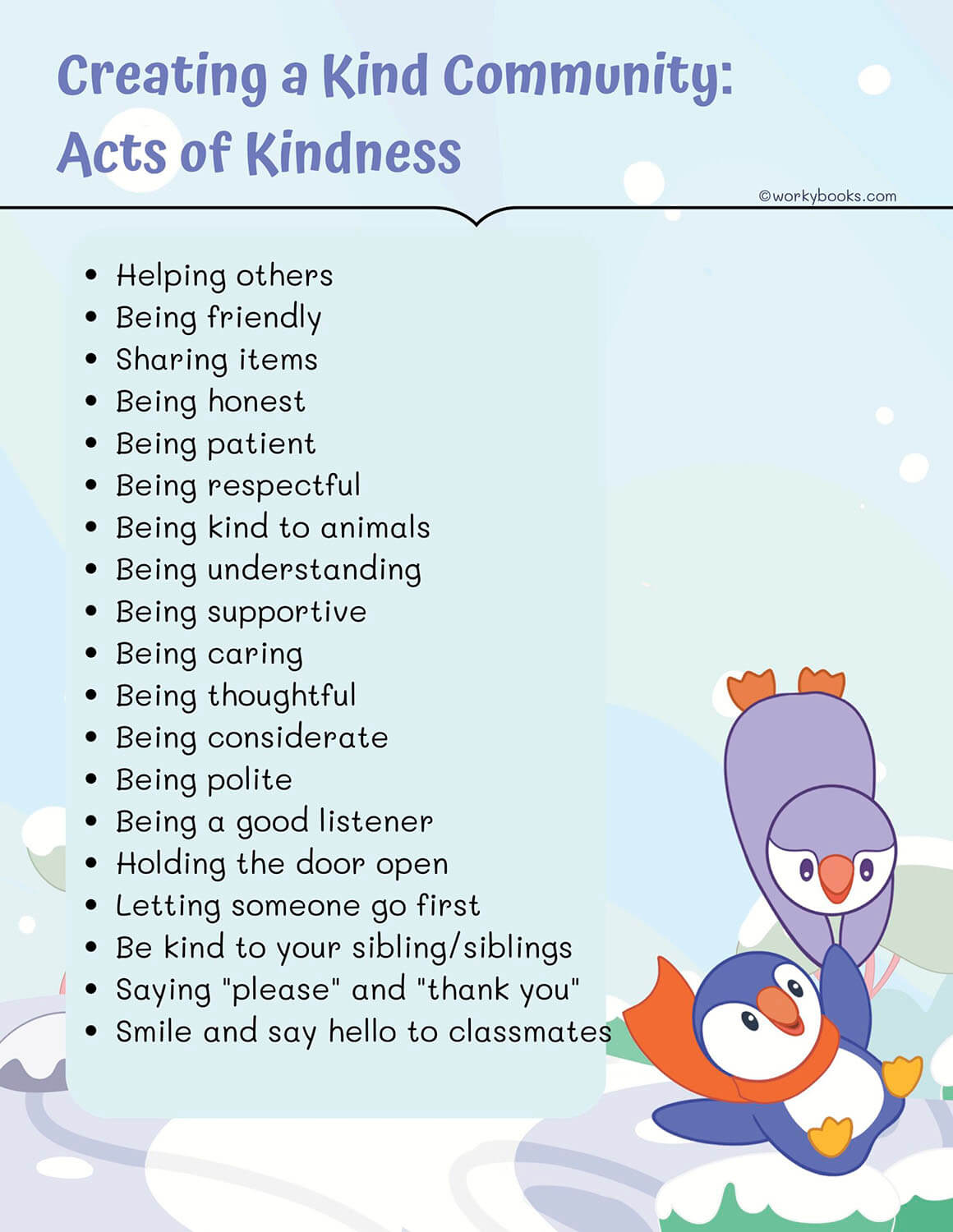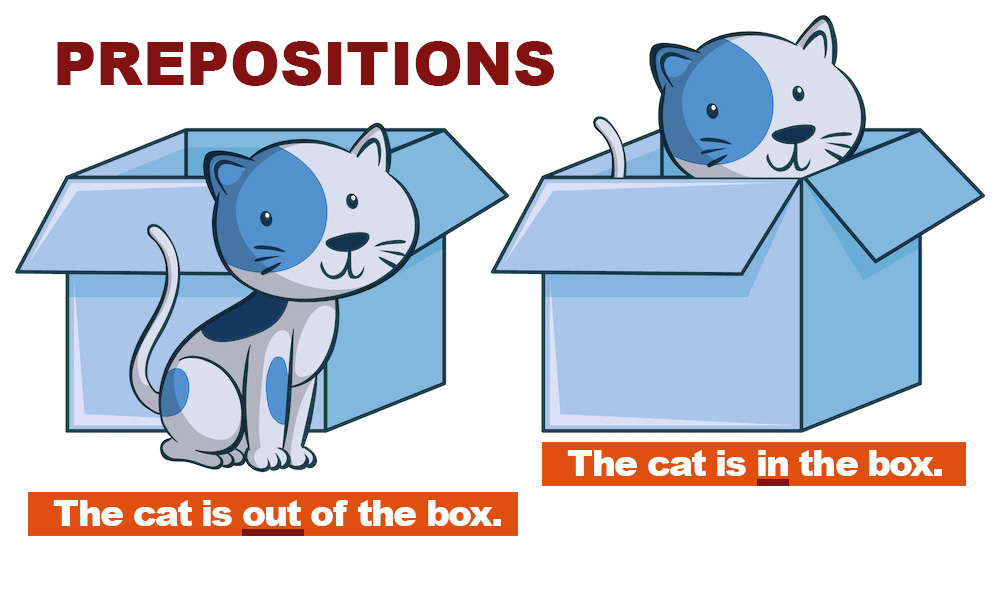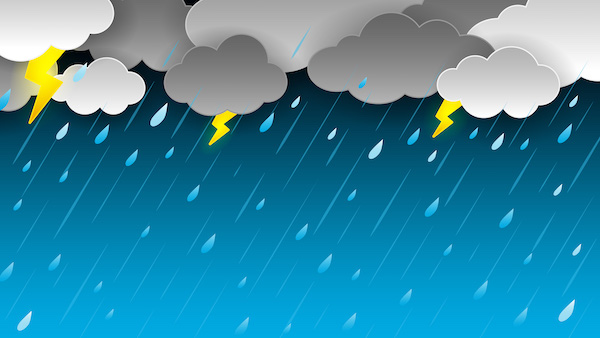Kindness in Kids: 5 Proven Strategies
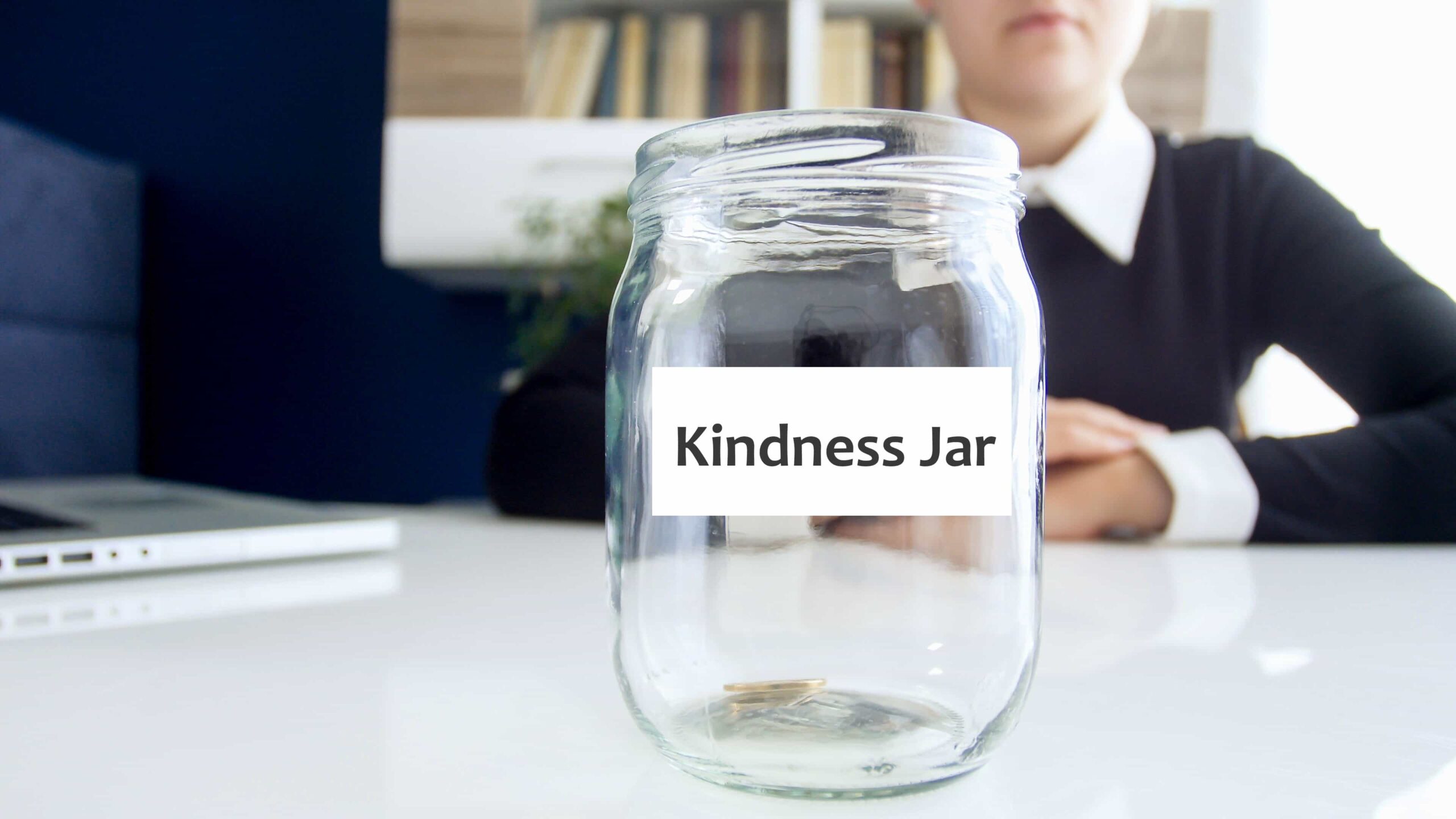
We all know that teaching kindness to children is an important part of parenting and education. It’s never too early to start instilling values of compassion and empathy in children, and the more we can do to foster kindness in kids, the better off our society will be.
What is kindness for kids?
Kindness is when you do something nice or helpful for someone else, like helping them, smiling at them, or sharing your toys.
Here are a few proven kindness strategies for teaching young kids:
Strategy 1: Nurturing Kindness in Kids: Lead by Example!
One of the best ways to teach kindness to elementary school kids is through example. Parents and teachers should lead by example and be kind to others, both in front of their kids and when they’re not around. Kids learn from what they see, so if they see adults being kind to others, they’re more likely to follow suit. November 13th marks World Kindness Day, a global celebration of kindness and its power to bring people from all walks of life together in a spirit of understanding and compassion. On this day, people are encouraged to take the time to do something nice for someone else, such as donating to a charity, volunteering, or simply holding the door open for someone. Celebrate World Kindness Day by being kind to someone that day. It can be as simple as smiling at someone you pass on the street, or as complex as taking on a leadership role in your community.
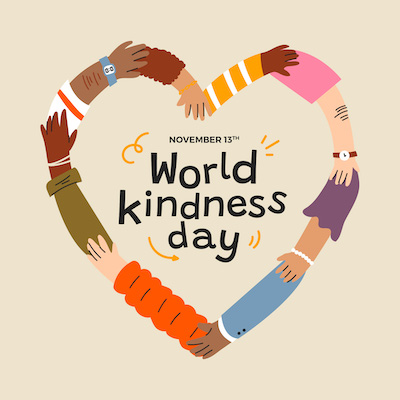
Strategy 2: Inspiring Kindness in Kids: Exciting Classroom Ideas That Really Work!
Create a culture of kindness in the classroom with these heartwarming ideas that inspire acts of kindness for kids! When children learn to be kind to others, they develop crucial social skills and contribute to a stronger, more empathetic community.
The Kindness Jar: A Daily Dose of Kindness Transform your classroom with this simple yet powerful activity. Place a decorated jar in a prominent spot, fill it with colorful paper slips, and invite students to write down random acts of kindness for kids they want to perform. Ideas might include:
- Sharing lunch with a classmate
- Helping someone with homework
- Writing a kind note
- Including someone new at recess
- Giving sincere compliments
Role-Playing Kindness Heroes Bring acts of kindness for kids to life through interactive role-play scenarios:
- Helping a new student feel welcome
- Standing up for someone being teased
- Offering to share supplies
- Comforting a friend who’s sad
- Including others in games
- Many schools have programs that are designed to help kids learn about compassion and empathy. These activities range from discussions to role-playing scenarios. They’re a great way for kids to learn about kindness in a fun and interactive way.
You can also encourage random acts of kindness outside of the classroom. Have students brainstorm ideas for kind deeds they can do for others, such as helping the elderly in their community or making cards for the homeless. Then, give them the opportunity to carry out their ideas and make a positive impact on the world.
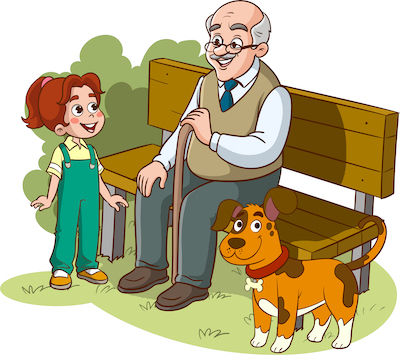
Strategy 3: Dive into these heartwarming books on Kindness
You can also teach kindness to elementary school kids through books and stories. Reading books that emphasize kindness and empathy can help kids understand the importance of being kind to others. It’s an easy way to get the message across without having to lecture them.
Reading these books together as a family or in classroom can be a great way to reinforce these important values and help children develop a sense of kindness and generosity towards others.When reading these books, discuss the stories with your kids and ask them questions about what they think and feel. This will help them internalize the lessons of kindness and build their empathy and understanding. It will also give them a chance to think about how they can show kindness to others in their own lives.
I hope these book suggestions help spark a love of kindness in young readers! There are so many more wonderful children’s books that teach valuable lessons about empathy, compassion, and understanding towards others.
Strategy 4: Spread love by rewarding kind actions
Finally, it’s important to reward and recognize kind behavior. Whenever you see a child being kind to another, it’s important to acknowledge it. Here are a few ways to reward good behavior to elementary kids:
Rewarding good behavior is a great way to encourage children to be kind and caring to others:
1. Praise: Praise is an effective way to reinforce positive behaviors. When children show kindness or helpfulness, it should be acknowledged and praised. This will encourage them to continue to be kind and generous.
2. Rewards: Rewards can be physical or non-physical. Physical rewards can include toys, books, or small treats. Non-physical rewards can include compliments, extra playtime, or a special activity.
3. Recognition: Recognition can be a great way to reward kindness. Acknowledging a child’s kind behavior in front of peers or other adults can make them feel special and appreciated.
Strategy 5: Include activities related to kindness
kindness coloring pages: Help your children explore the beauty of compassion with our collection of kindness coloring pages! These engaging illustrations go beyond simple art activities – they’re powerful teaching tools that help young minds understand empathy, generosity, and caring for others.
Each coloring page features heartwarming scenes of children helping friends, sharing toys, comforting others, or showing kindness to animals. As kids color, parents and teachers can discuss the actions depicted, making it a perfect opportunity for meaningful conversations about being kind.
Kindness word search
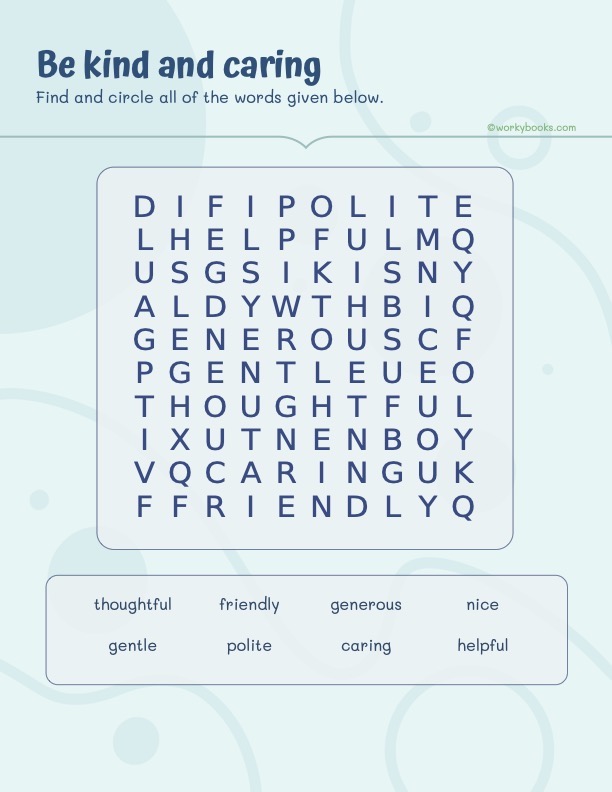
Perfect for home, classroom, or counseling sessions, these free printable kindness coloring pages combine creativity with character education, making learning about compassion fun and memorable
Remember, teaching kindness isn’t just about one-time actions – it’s about fostering a mindset of compassion that children will carry throughout their lives. Let’s create the next generation of kind, empathetic leaders!
Wishing you all a happy and kind 2025 from the Workybooks Team!

